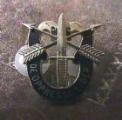
Originally Posted by
Entropy

120mm,
I understand what you're saying, but the Air Force has training requirements too that need to be met. I have to say I find it kind of amusing that the perception has changed from the AF hating and ignoring CAS to being overly focused on CAS. Some accommodation and artificiality must be introduced for everyone to meet their training requirements. I understand (and fully support) the goal of more non-lethal options in theater, but that should not mean that CAS training should be reduced. After all, when you really do need CAS, do want a pilot supporting you in theater who spent most of his/her time at JMRC burning circles in the sky?
Most of my large training exercise experience is from my Navy time, and accomodations were always made to ensure everyone met their training requirements and got to actually practice their wartime skills. This inevitably means that some players will have to do things they wouldn't actually do in wartime. For example, submarines in exercises will let ASW assets get an initial detection so that ASW assets can practice tracking, engagement, etc. - something a sub would never do in a real war.









 )
)





Bookmarks